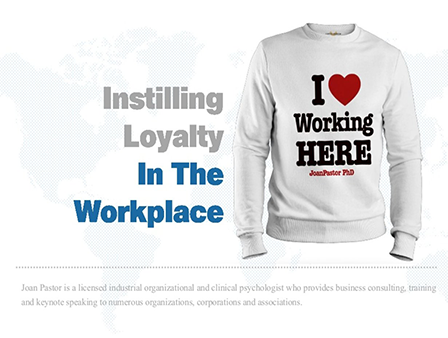From 9-15% of the population in the United States is considered to have a personality disorder (Mattia & Zimmerman, 2001), which is a significant amount of people. The prevalence of any specific personality
disorder ranges from 1-3%, which are small numbers until you consider that most people with this problem have multiple personality disorders. While a person with any personality disorder can create problems for others in the workplace, the ones that seem to do so as part of the Syntonic Syndrome,
creating the most damage, are in Cluster B. This might be especially true because these people often seek leadership positions, especially when they are bright.
“What a horror story it was! This doctor was active in our association for quite a while and was so charming. In fact, even though we could see that he was slowly positioning himself to one day be elected president, we didn’t mind since he seemed like he would be great to work with. His fellow colleagues
seemed to feel the same way and eventually he achieved his goal as president of the association.
But once elected, everything changed. He immediately took control and started dictating to the Board how things were going to be. He told me how I was going to do my job and made it clear that I was to do whatever he wanted. He was like this with everyone. It became so bad that the Board, being made up of other equally successful and powerful people, pulled together, and for the first time in the history of our association, a president was booted out of office! He thought he was the victim and that we were simply all jealous of him, and he immediately sued. He paralyzed the whole organization for a while there.
Even though we had just cause for removing him, we eventually paid a lot a money to shut him up and get him off our backs.” People with narcissistic personality disorder are preoccupied with fantasies of unlimited success, power and brilliance, and will often see the business world as the place to make those fantasies come real. They might also be obsessed with being admired by others and are prone to exaggerating their self-importance
and their accomplishments. It is not that this person cannot be a hard worker and actually accomplish a great deal. But if they do, you can bet they will make sure they are recognized for it early on by those
they care most about- others in positions of achievement, power and/or visibility.
They see themselves as superior to most others, and demand compliance in return from “underlings.” In American culture, it is not uncommon for people like this to move quickly in decision-making and taking action, and to gather
around themselves those who share similar traits. Anyone who expresses concern for the soundness of decisions being made is rejected.
As was seen by the example of the doctor, these people are capable of being quite charming and charismatic, which as we will see is also true for those with antisocial personality disorder. A person with narcissistic personality disorder might not be using their charm consciously to deceive, but they are very
sensitive as to whether others are impressed. It is easy to see how a person with narcissistic personality disorder ends up in positions of leadership- the visibility reinforces in their mind how exceptional they are.
The goal is to get what they want and if others are harmed in the process…oh well… They can be very seductive when it comes to getting others to believe in their schemes, mainly because they truly believe in them themselves. They have a great capacity for self-deception. Most people with personality disorders lack self-awareness. This is not however the case with the person
who has an antisocial personality disorder, who’s private goals are often to obtain complete control or to dominate others. The average person knows this person as the psychopath and many in the medical profession would consider this personality disorder as potentially the most dangerous. Why? They lack
remorse. Among other things, a person with antisocial PD is willing to break the law and/or deliberately hurt and deceive others in order to get what they want.
They can be irritable, aggressive, and impulsive and generally do not plan ahead. However, if they are bright, then meticulous planning and patience can
result in the most heinous crimes. In fact, there are passive and active psychopaths (Simon, 1996). The passive psychopath tends to be exploitative of others and will attach themselves like parasites, while the
active psychopath is the one who commits the major crimes. There has to have been signs of serious misconduct by the time they are 15 years old, and substance abuse is often a problem for these people (drugs and/or alcohol; Dolan-Sewell, Krueger & Shea, 2001).
Very few people in the psychiatric or psychological profession have written about the connection between the psychopath and the businessperson, though people in general make anecdotal comments regularly about ruthless business people who have no remorse in their business dealings. It is important to note that not all criminals are psychopaths. The actual percentage of people with this disorder are small (Community samples in the normal population indicate about 3% in males and 1% in females, but it is
growing; DSM-V), but these people may truly be “wired” differently. Peter Lang (1995) of the University of Florida, for example, has been able to show how psychopaths reflexively respond to visual stimuli the opposite of those who are not psychopaths. For example, when confronted with something
that is emotionally unpleasant, most people usually defend themselves against it unconsciously because it is unpleasant. When they perceive or experience something that feels good, defensive reflexes go down.
However, the exact opposite response occurs for psychopaths: they open up more to aversive experiences and defend themselves more against pleasant ones!
Consultants on leadership behavior have noted Machiavellianism (or “Mach”) could be a critical personality characteristics of leaders (Deluga,2001; Ferris et al., 1995), or on a less offensive note, that successful business leaders tend to not have many social needs and instead are more attracted to achievement and power. Deluga (2001) notes that “Mach” leaders often use charisma, and others have also noted the tendency of followers to confuse charisma and Machiavellianism.
But this is simplistic.
People with antisocial personality disorder certainly have used charisma to dupe others (as have any people who have any of the Cluster B disorders). Indeed, a whole separate field of study called “the dark side of leadership” has emerged in the field of psychology. Charisma can also be a positive attribute,
helping people through organizational turbulence and adversity for example (Bass, 1998), but in many cultures, it is not necessary.
Simon (1996) warns that it is important to make a distinction between professionals such as the entrepreneur, doctor or lawyer who often are required to be ruthless in the pursuit of business goals, and
the person with antisocial personality disorder who are motivated by their need to express hostile impulses or to get even. His perspective needs to be reconsidered, especially given recent developments in the business world in recent years. Tickle, Heatherton and Wittenberg (2001 in Livesley), three
researchers whose expertise is in personality disorders, believe that people actively select environments that suit their personalities and that support their basic behavioral tendencies (p.251). While I do not think every strong businessperson has the Syntonic Syndrome, clearly we are seeing many instances where business people are running companies into the ground using accounting procedures and many other tactics that they know are illegal. Of course, this has been going on for decades, as legal loopholes
(and cultural complicity such as maximizing short-term gains over long-term rewards) made it extremely enticing for people both with and without Syntonic Syndrome to take advantage.
Before we leave this section, it is important to note that a healthy person may also behave in ways that are harmful to others- we all have dark and devious impulses inside us that we sometimes cannot quell. But this person will have an opposite reaction: they will become ego-dystonic. They will:
1. experience the intense anxiety but they will also be repulsed by their own behavior,
2. be able to shun the limelight and embrace humility (Collins, 2001),
3. they will be able to step outside themselves, so to speak, and see how their behavior hurt others,
4. they will be able to take action to remedy the situation,
5. they will be able to gain awareness if this negative behavior is chronic, and
6. most important of all, they will work hard to change the behavior, especially if it is hurting loved ones or if it makes themselves a danger to the organization.
Also, many unhealthy syntonic people will feel very strongly that they have values and morals. Indeed, many can also feel genuine guilt and self-repugnance, though usually for much shorter periods of time than the ego-dystonic person. Some make a great display of “owning up”, almost always when caught and there no longer is any way out. The remorse and tears are often heartfelt for that moment only, and because their mental schema consists of changing the facts to avoid the pain of self-awareness, actual behavior change does not occur. As soon as there is a reprieve, the denial of reality once again takes precedence and there is simply an inability to take responsibility for their behavior.
Some will even take their battle-and blame- to the streets, not realizing that what they cannot see in themselves is immediately transparent to most others. Michael Orvitz, once the king of Hollywood, apparently became so difficult to work with that he eventually derailed (a common phenomenon for
syntonic people in the business world); no one wanted to do business with him anymore. That’s saying a lot considering the egos in Hollywood! Against the advice of everyone he consulted, he gave a complete sob story to Vanity Fair (August, 2002), pointing fingers and spilling dirt at the other big boys in the business. Did he point the finger at himself at all? Yes- he was mad at himself for not selling his business sooner when he could get more money for it!
In the long run, the person has to be ego-dystonic enough that they can truly see the harm their behavior is causing themselves and others, and can project into the future and hold the results of their current actions. If the end result of clearly self-recognized harmful behavior is not in behavioral change, then it is
important to ask if the person is ego-syntonic, at least surrounding their intentions of that behavior.




